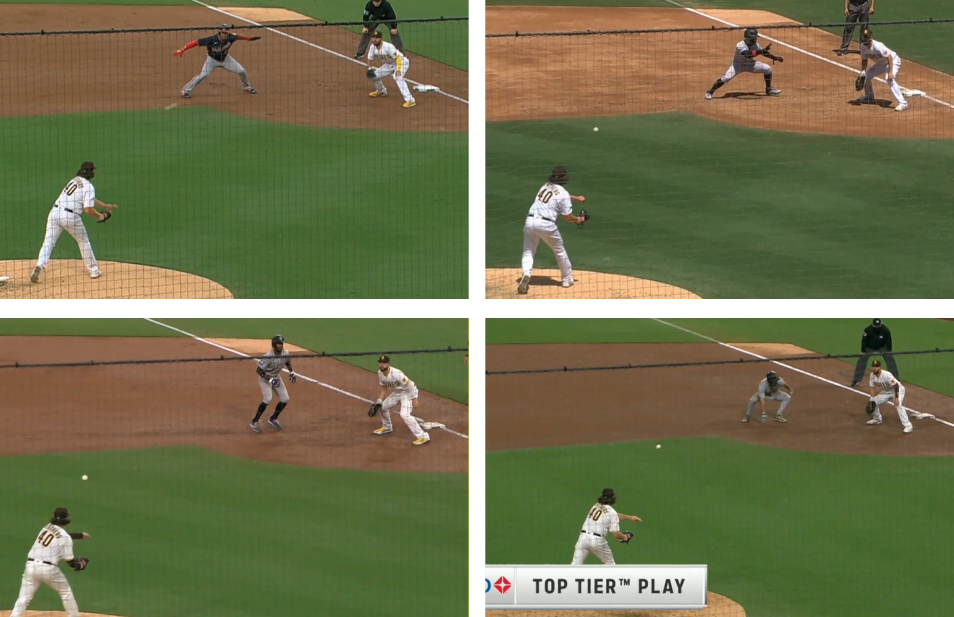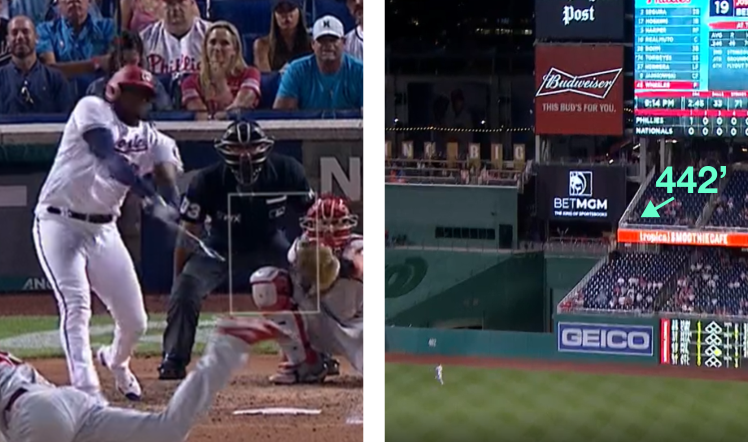Postseason Preview: Power On Display as Brewers Face Braves in NLDS
Despite reaching the playoffs in dramatically different ways, the Brewers (95–67, NL Central champions) and Braves (88–73, NL East champions) look rather alike. Our power rankings give Atlanta the slight edge, but our projections land slightly on the side of Milwaukee. And while the Brewers may have the advantage in record, the Braves had a better run differential. To make matters even tighter, they split their season series, 3–3. Still, our staff predictions, where 26 of 28 folks chose the Brewers, would suggest that this is the most lopsided of the first-round matchups, but I don’t think that captures how close this series is on paper.
| Braves | Brewers | |
|---|---|---|
| wRC+ | 98 (13th) | 91 (23rd) |
| wRC+ vs Lefty | 93 (25th) | 90 (26th) |
| wRC+ vs Righty | 100 (10th) | 92 (19th) |
| Starter ERA | 3.83 (7th) | 3.13 (2nd) |
| Starter FIP | 4.09 (13th) | 3.29 (1st) |
| Bullpen ERA | 3.97 (10th) | 4.02 (14th) |
| Bullpen FIP | 4.08 (12th) | 4.34 (18th) |
| Infield OAA | 3 (10th) | -31 (29th) |
| Outfield OAA | 6 (10th) | 17 (4th) |
The Brewers won the NL Central with elite starting pitching that helped make up for their poor offense, which scored just enough runs to make those starts stand up. The Braves have a more well-rounded team that is strong on offense, pitching and defense, but is perhaps not elite anywhere.
Milwaukee coasted into the playoffs, with a 52–27 stretch in the heart of the season giving them a 99.9% chance to win the division on September 1. Going 14–15 in that final month may have made fans uneasy heading into October, but Craig Counsell was able to use his team’s large lead to go a bit easier on a pitching staff that will be asked to do the heaviest lifting going forward.
Of more concern for the Brewers is the injury to Devin Williams, who broke his hand while celebrating the division clinch and will miss the postseason. He was their best right-handed option out of the pen, and his loss will put added pressure on Brad Boxberger, Hunter Strickland and Jake Cousins, all of whom move up a rung on the ladder and none of whom are sure bets. Boxberger had a great season but pitched poorly in September, with 10 earned runs and three homers allowed in 8.2 innings. Strickland has been stellar since joining the Brewers in mid-June, but that came with a .198 BABIP. Cousins has the most electric stuff of the trio but is fresh off a biceps injury that kept him out of Milwaukee’s final week of games.
Unlike the Brewers, the Braves have been playing meaningful games all September, sweeping a big series against the Phillies at the end of the month and surviving just enough shaky outings from volatile closer Will Smith to clinch their fourth straight division crown. That latest title did not come easy. Atlanta lost its best player, Ronald Acuña Jr., to a torn ACL on July 10th, and went without one of their best pitchers all season when Mike Soroka suffered a setback in his recovery from an Achilles tear. Add some poor play to the mix, and the Braves had just a 10.4% chance to win the NL East on the day of the trade deadline. But thanks to a number of small moves made at the deadline, like bringing in Eddie Rosario, Adam Duvall, and Jorge Soler, the team took off.


